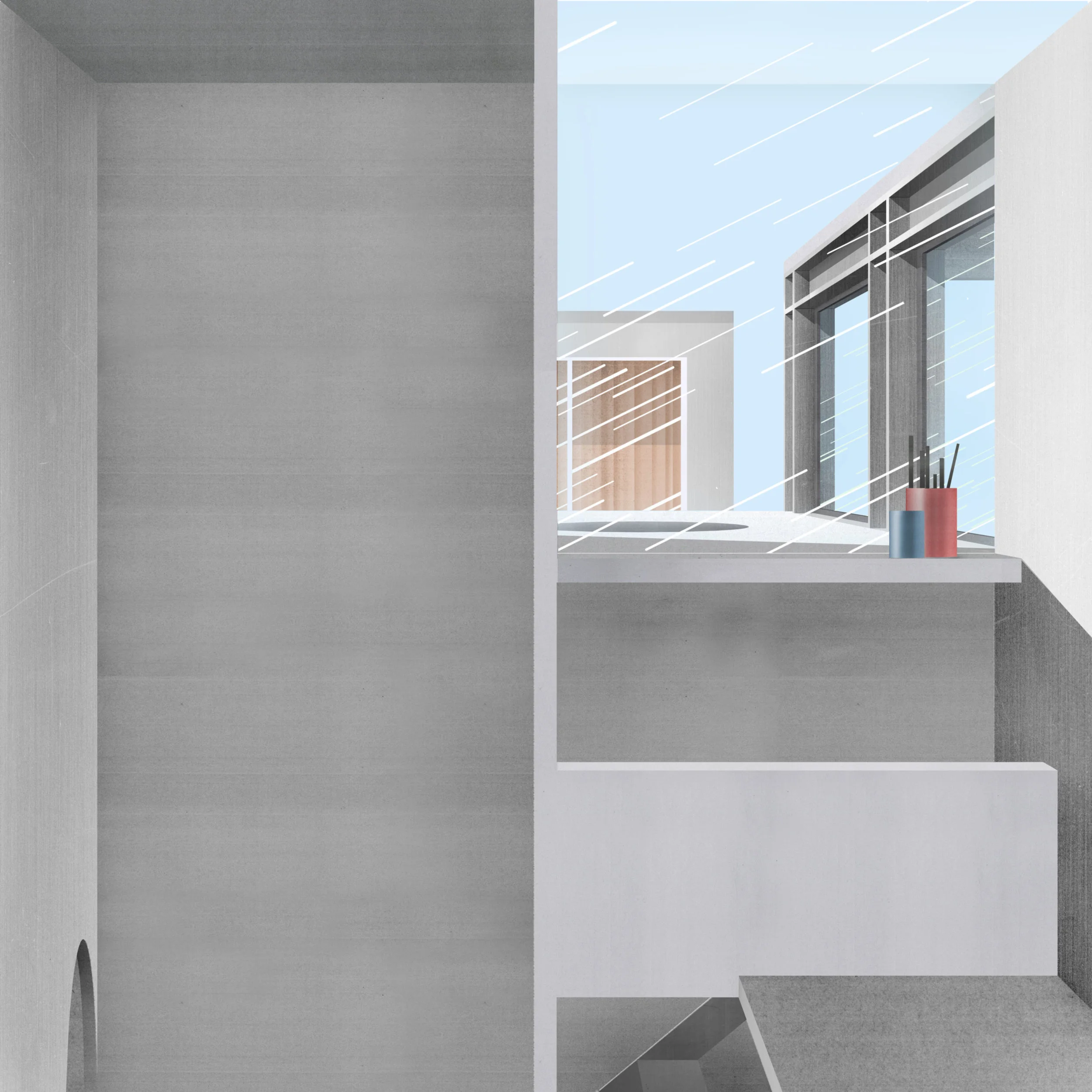Alcoves
Housing in London
A single common room vs the inhabited wall
The relevance of family dwelling within domestic space is perceived as a dogmatic notion. In our contemporary understanding of society however, there is a paradox of the family: while the virtues of family unity are promoted through its inseparableness from the notion of the household, family unity is increasingly scarce due to the family’s unpredictable methods of operation. Family, in its Greek terminology (οικογένεια) is a combination of the notion of house and descent, while economy (οικονομια) is understood as household management. It comes to no surprise therefore, that the family has been considered a model of the way society and government operate; which is further exposed by the greek terminology of police (αστυνομια), literally meaning ‘management of groups of houses’. The act of policing therefore, is solely an extension of the act of managing the household for the common good of the family. The industrialisation of London, celebrated by the Great exhibition of 1851 which included the Model dwelling for four families, exposes the moment in which, through the architectural manifestation of housing, there is the acknowledgement of the shift of the family from a model of government to an instrument of government; an apparatus. Through the analysis of Henry Roberts’ proposed prototype of the family dwelling in the nineteenth century, against the background of its context and historical continuity, one can trace the immersion of the family dwelling as a universal model with the strategic function to normalise and regulate the population. The analysis of the family dwelling in the micro-scale of the individual cell, can expose how the city is administered through the explicit regulation of the family through the family dwelling as an apparatus that prescribes the family’s self regulation. In the name of biopolitics, the family becomes a form of policing, cemented by personal relations.
Henry Roberts' model dwelling for four families - 1851
Alcoves is a project situated in London that aims to change the grammar of housing; done in no other way than tackling the family. The family has remained the focus of housing since it became the subject through which any form of government extends its methods of operation within the domestic. Housing has provided the perfect platform through which the state may promote a specific type of family.
Historical precedents within London expose that the parti-wall in the neighbourhood scale and the distribution space in the domestic scale are the two elements that have ensured interaction within a family as well as among neighbouring families is reduced and undesirable. As a result, the family has been transformed into a fixed entity whose relationships are set in stone. Taking the form of an archetype, the project questions the current family apartment by challenging this obsession of the room and the importance of layout. Alcoves, reintroduces the prehousing condition of the family, where a dwelling consists of one single common room. The room is demarcated by two frames which host a series of niches that provide seclusion for the members of a family.
The frames accumulate all niches, and as a result the room in between becomes empty space, desirable simply for its pontetial. Additionally, as it is freed from any form of subdivision, it is not only more spacious than rooms within conventional dwellings, but it is valued purely according to its area in square meters. The niches themselves, are bought as pieces of furniture of specific functions such as studying, bathing, sleeping and so on. They a self-closing element to provide seclusion but cannot be perceived as rooms and can only be understood as supportive spaces of the common space. The frames are of the finite dimension of three by sixteen meters, and can host the niches in such a way that the niches themselves are easily interchangeable and replaceable.
A series of niches: rooms as furniture
The adaptability of the frames and what they host allows the family to evolve within the same set of frames. Even though there is a clear adjacency between the niches of the frame and the abstract space, they are independent from each other, as the changes within the frame do not affect the space. If the aim of the plan as a method is to secure our obsession with layout, then the project becomes a form of anti-plan, as it allows the family to be detached from any form of layout. Additionally, the adaptability of the frames allows the family to not take its relationships for granted.
A single storey proposal of the adaptable frame
The project takes the position that the family is not a fixed entity, but the relationships can change as easily as the use of the frames: the family has the potential to be changed, extended and prolonged and the space can easily adapt to that. The project embraces the inevitability of its own densification and subsequently the frame takes the language of the parti-wall: an architectural tool that separates but is at the same time shared. In the case of the project however, each frame is shared by two families. The nature of the frame, which is to allow the constant shift of niches within it, ensures that the negotiation of its use is dynamic. The boundary line between two families is never permanent and can never be standardised. Unlike the party wall, the frame is a tool against a standardised and clear demarcation of land.
The parti wall is no longer a tool to separate, but a tool to cooperate and allow interaction. When one simply needs the common room created by the frames, the neighbour can use the whole depth of the wall. Additionally, all niches are not rooms in themselves, but simply support the single common room that they frame.
Alcoves recognises the importance of subversion: to change the language of both housing and the family, instead of introducing new words, one must simply change the meaning of the words that already exist within. Alcoves focuses on subverting the two elements that have maximised the efficiency of housing and secured the disintegration of the family. The parti-wall and the distribution space have now become the tools of interaction, whether it is for conflict or negotiation. Alcoves is a project that simply takes a language familiar to the realm of housing, but subverts it in such a way to allow the family to operate outside the policies and tools that dictate the way we occupy space.
The proposal is similar to scale with terraced housing



















